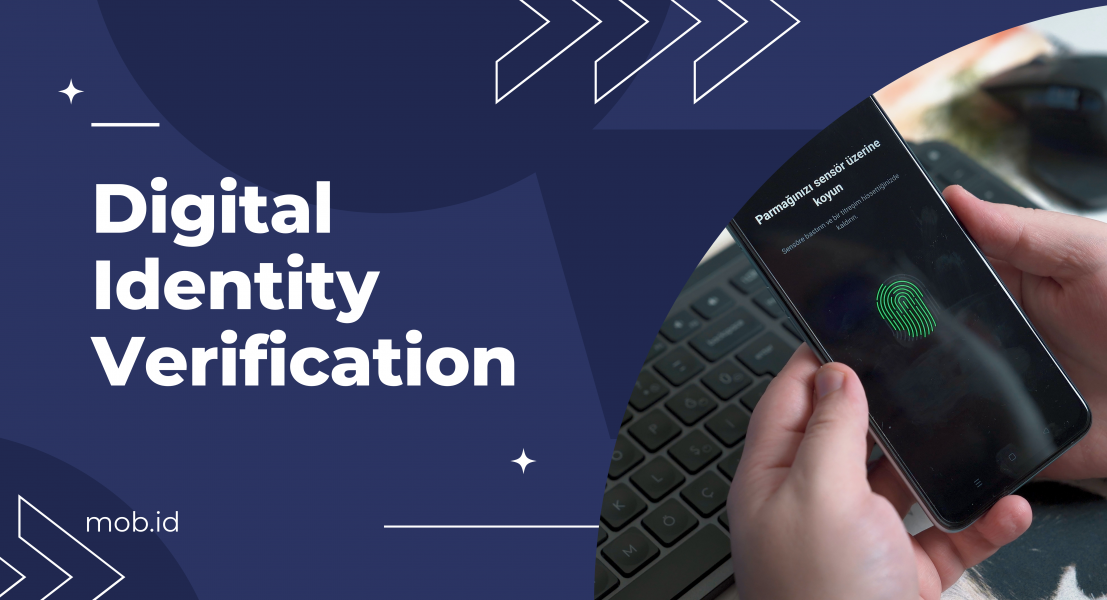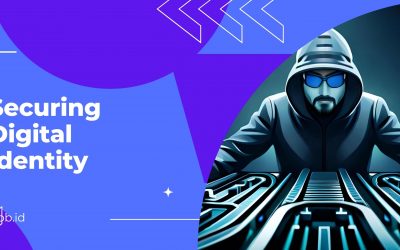Our online identities are becoming more critical in an increasingly digital world. But what is digital identity verification, and why is it so important?
Digital identity verification ensures that a person or entity you are dealing with has their identity verified. We can protect our information by understanding how it works and the challenges.
What is digital identity verification?
Digital identity verification is the process of confirming that an individual is who they say they are, using digital means. This can be done in various ways but typically involves checking an individual’s government-issued ID against a database or using biometrics to match their physical characteristics with those on record.
There are several reasons why businesses might need to verify someone’s identity online. The most common is to prevent fraud and safeguard sensitive information. For example, when opening a new bank account or applying for a loan, you will likely be asked to provide identification so that the financial institution can verify your identity and confirm that you are who you say you are.
“Identity will be the most valuable commodity for citizens in the future, and it will exist primarily online. We will see a proliferation of businesses that cater to privacy and reputation concerns. We will even see the rise of a new black market, where people can buy real or invented identities.”
Eric Schmidt, Google chairman
How Does Digital Identity Verification Work?
Digital identity verification works by confirming the identity of an individual or entity through their digital footprint. This can be done through various methods, such as social media verification, email verification, phone verification, and more. By verifying the identity of someone through their digital footprint, businesses can ensure that they are dealing with the correct person or entity.
Most Common Methods of Identity Verification
- One-Time Password (OTP) Verification
OTP, or one-time password authentication, verifies a user’s identity using a unique code generated for each login attempt. This code is usually sent to the user’s mobile phone via SMS and must be entered in addition to the username and password. OTP verification adds an extra layer of security to online accounts, making it more difficult for hackers to gain access.
- Knowledge-Based Verification
Knowledge-based verification is one type of digital identity verification, and it involves verifying a person’s identity by asking them questions that only they would know the answer to. This can be an effective way to verify someone s identity, but it can also be vulnerable to fraud if the person being verified is not who they claim to be.
- ID Document Verification
In-person identity verification can be performed using various identity documents, such as government IDs, passports, and birth certificates. This process helps to ensure that an individual is who they claim to be.
- Biometric Verification
Biometric data is unique to each individual and can be used to verify someone’s identity with high accuracy. This usually involves using a fingerprint or iris scan, as these are unique to each individual. Biometric verification is exceptionally accurate, making it ideal for confirming someone’s identity.
How Do You Verify Someone’s Identity Online?
There are several ways to verify someone’s digital identity. Still, it typically involves using personal information (such as name, date of birth, address, etc.) and a government-issued ID (such as a driver’s license or passport). This helps to ensure that the person is who they say they are and that they are authorized to access the requested information or perform the desired action.
A comprehensive identity verification process typically begins with the collection of user data. Users are usually asked to provide details such as their first and last name, date of birth, identity document number, personal identification number, and other personal information during the account creation process.
One of the challenges of digital identity verification is that it can be time-consuming and expensive for businesses to do correctly. Another challenge is that there are many different regulations regarding digital identity verification, which can make it difficult for companies to know what they need to do to comply with them.
What Are The Regulations in Digital Identity Verification For Businesses?
The European Union’s (EU) Anti-Money Laundering Directives (AMLD) are a set of EU directives that aim to prevent money laundering and terrorist financing. The AMLDs require businesses to verify the identity of their customers when they open an account or engage in a financial transaction.
Data authentication and user identity verification
Digital verification solutions can utilize cutting-edge technologies and software, such as Optical Character Recognition (OCR). OCR extracts data from photographically acquired images of identity documents to guarantee their validity and accuracy.
Anti-Money Laundering Directives
Anti-Money Laundering Directives require financial institutions to verify their customers’ identities. Digital identity verification involves using electronic means to confirm an individual’s identity. This can be done through biometric data.
eIDAS (Electronic Identification, Authentication and Trust Services regulation)
The European Commission has adopted the eIDAS regulation, which provides a legal framework for electronic identification and trust services across the EU. The regulation came into force on July 1, 2016.
The UK Bribery Act & The UK Modern Slavery Act
The UK Bribery Act and the UK Modern Slavery Act are two examples of legislation that uses digital identity verification to help prevent and prosecute crimes.
Financial Action Task Force (FATF) recommendations and standards
In June 2019, the Financial Action Task Force (FATF), an intergovernmental body that sets global standards for combating money laundering and terrorist financing, released new guidance on digital identity verification. The guidance recommends that countries adopt a risk-based approach to digital identity verification, considering factors such as the sensitivity of the information being verified and the level of risk posed by the transaction. The FATF also recommends that countries establish national KYC utilities, which would allow financial institutions to verify the identities of their customers electronically.
The Customer Identification Program (CIP)
The Customer Identification Program (CIP) is a set of procedures that financial institutions must follow to identify and verify the identity of their customers. CIP includes collecting customer information such as name, date of birth, address, and Social Security number; verifying the customer’s identity through an independent source such as a driver’s license or passport; and maintaining records of the information used to verify the customer’s identity.
In addition, businesses should also perform additional checks on customers, such as checking their names against sanctions lists and verifying their addresses.
What are the challenges of digital identity verification?
There are several challenges associated with digital identity verification:
-
Ensuring the authenticity of the claimed identity.
-
Protecting against identity theft and fraud.
-
Maintaining privacy and data security.
-
Providing an easy and convenient user experience.
-
Managing the increasing complexity of identity verification.
Mob.id providing a secure, scalable, and flexible platform for fraud prevention, KYC, and AML compliance through in-depth passport verification.
What Are The Risks Of Not Using Digital Identity Verification?
Without proper validation, individuals may be able to access sensitive information or account details that could be used to commit fraud or other crimes.
Second, businesses may face hefty fines or other penalties without compliance with regulatory requirements related to customer identification and authentication.
Finally, with digital identity verification in place, companies can build trust with their customers due to the need for a safe and secure way to verify their identities.
Summary
Digital identity verification is crucial because it helps businesses verify their customers’ identities, prevent fraud and avoid AML fines.
To help businesses stay compliant with modern AML and KYC regulations Mob.id has implemented a process of passport authenticity verification by utilizing e-signatures of the identity document validated through Near Field Communication (NFC) technology, supported by more than 300 public certificates across 190 countries.



